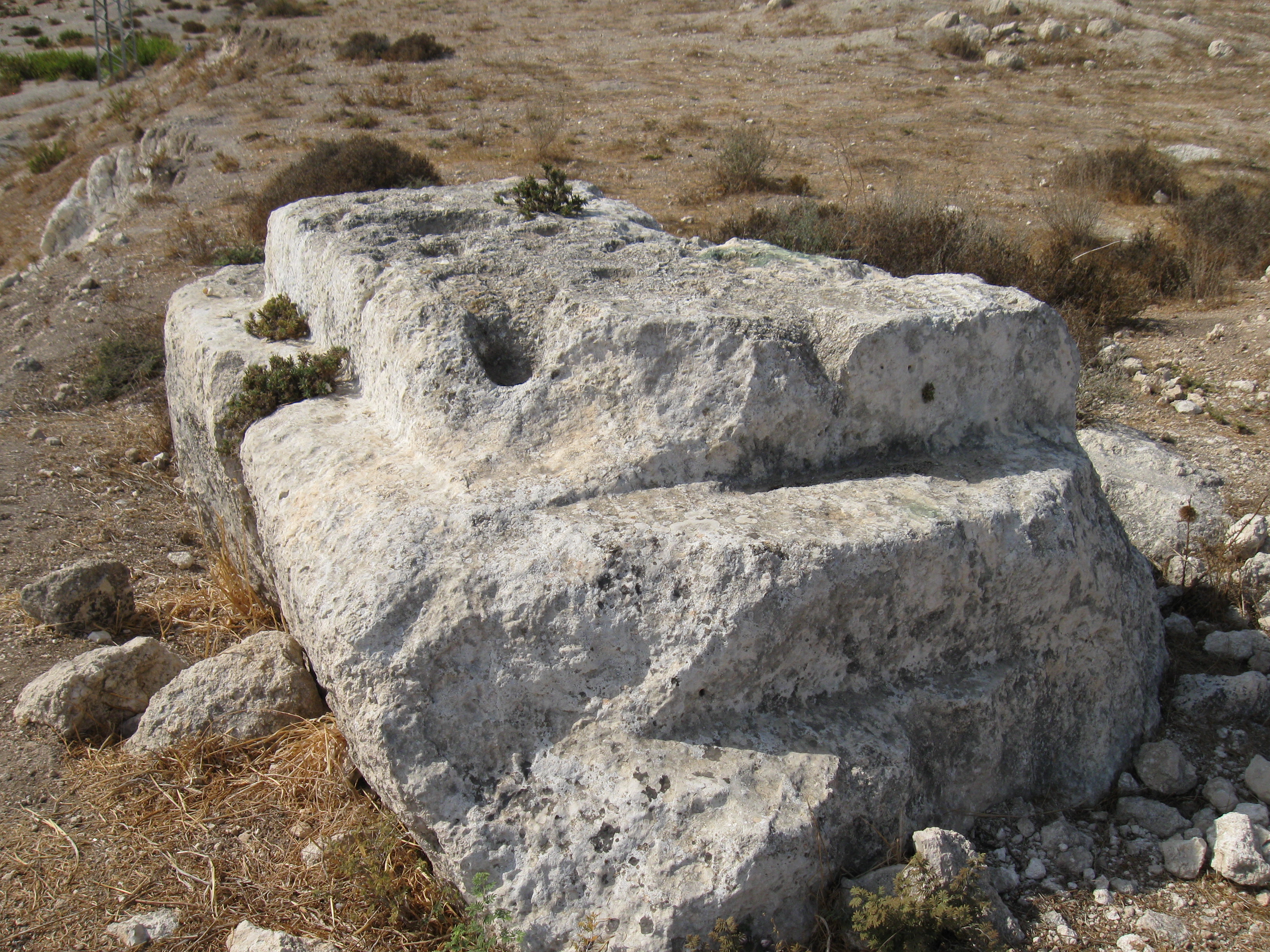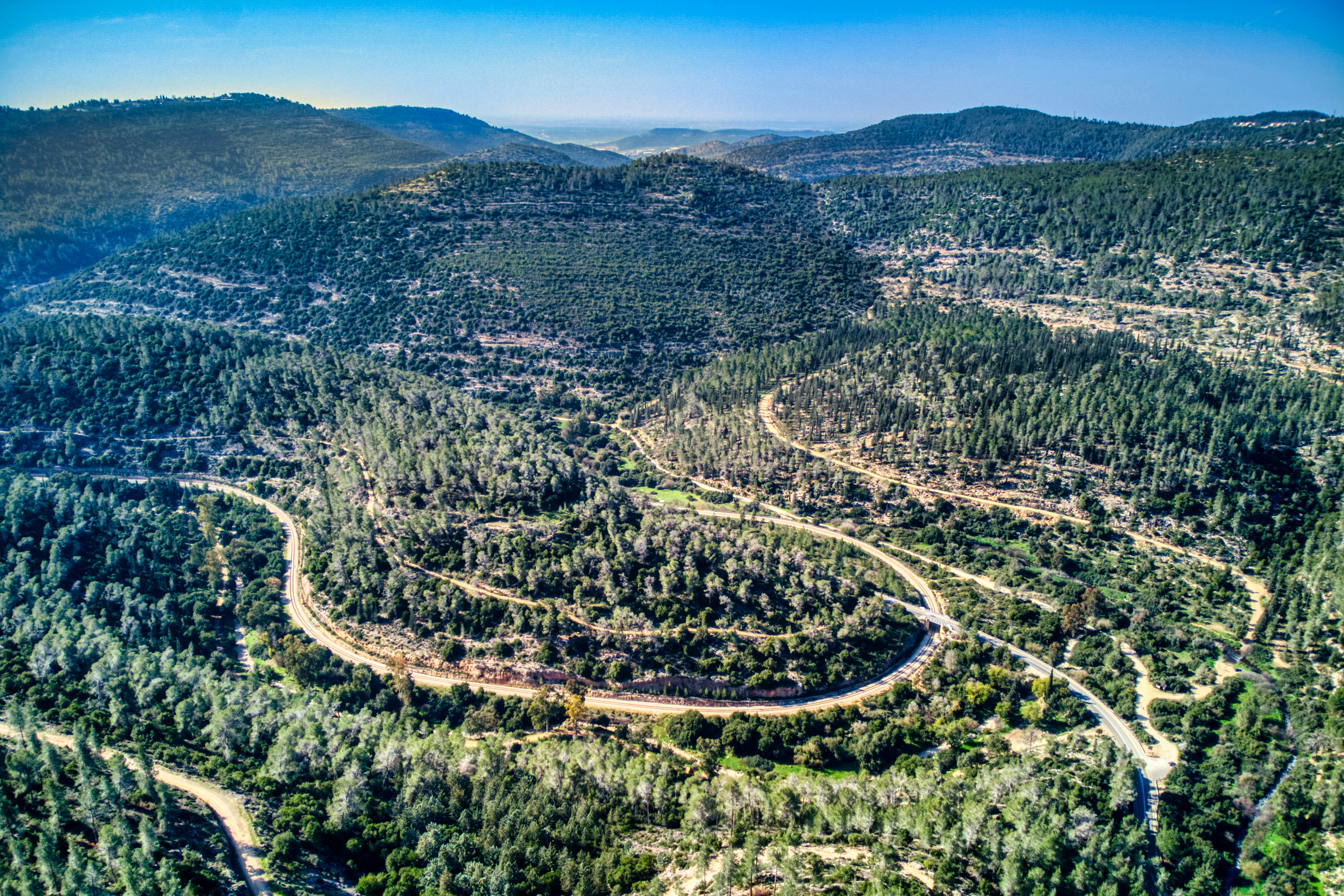|
Zorah
Zorah () or Tzorah (), was a biblical town in the Judaean Foothills. It has been identified with the former village of Sar'a, now often referred to as Tel Tzora. Location Zorah was situated on the crest of a hill overlooking the valley of Sorek. It lies at an elevation of about above sea-level. It is located 23 kilometers west of Jerusalem near Nahal Sorek. History Zorah was mentioned together with Ajalon in the Amarna letters as a city attacked by the Apiru. Zorah has been identified with the biblical Zoreah (), and is the birthplace of Samson. states: :"there was a certain man from Zorah, of the family of the Danites, whose name was Manoah". Samson's grave is recorded as being near there (), and which the historian Josephus says was in a village called Sarasat. In , Zorah is mentioned in the allotment of the Tribe of Judah, on the border with the Tribe of Dan. It was most likely the Danites who occupied Zorah. According to the Book of Chronicles, it was fortifi ... [...More Info...] [...Related Items...] OR: [Wikipedia] [Google] [Baidu] |
Tzora
Tzora () is a kibbutz in central Israel. Located about 20 km from Jerusalem, near the city of Beit Shemesh, it falls under the jurisdiction of Mateh Yehuda Regional Council. In it had a population of . Etymology The kibbutz is named for the biblical village of Tzora, which may have been a Canaanite town. The name was taken from the Tanakh, Biblical Book of Judges (13:25): "And the spirit of the Lord began to move him (Samson) at times in the camp of Dan between Zorah and Eshtaol." The kibbutz's name is also similar to, and is related to that of the nearby and depopulated Palestinian village of Sar'a. History Biblical era Tzora is located about 2 km south-west of Tel Tzora, which is where the Palestinian village of Sar'a stood until it was depopulated during the 1948 war. Tel Tzora is the likely location of the biblical village of Zorah. Second Temple era A ritual bath dating back to the Second Temple Period was discovered near Tzora kibbutz during an archaeological ... [...More Info...] [...Related Items...] OR: [Wikipedia] [Google] [Baidu] |
Sar'a
Sar'a (), was a Palestinian Arab village located 25 km west of Jerusalem, depopulated in the 1948 war. The site lies on a hill, at an elevation of about above sea-level. History Bronze Age to Roman period Sar'a might have been built on the ancient Canaanite site of Zorah, which became a Danaite town. The Romans called it Sarea. Ottoman period Incorporated into the Ottoman Empire in 1517 with the rest of Palestine, Saris appears in the 1596 tax records as a village in the ''nahiya'' (subdistrict) of al-Ramla under the ''liwa''' (district) of Gaza with a population 17 Muslim households, an estimated 94 persons. The villagers paid taxes on a number of crops, including wheat, barley, olives, goats and beehives a total of 6,000 Akçe. In 1838 Edward Robinson reported that the village belonged to the "Keis" faction, together with Laham Sheiks, of Bayt 'Itab. In 1863 Victor Guérin found it to be a village with some three hundred inhabitants. An Ottoman village l ... [...More Info...] [...Related Items...] OR: [Wikipedia] [Google] [Baidu] |
Manoah
Manoah ( ''Mānoaḥ'') is a figure from the Book of Judges 13:1-23 and 14:2-4 of the Hebrew Bible. His name means "rest". He is the father of the judge Samson. Family According to the Bible, Manoah was of the tribe of Dan and lived in the city of Zorah. He married one woman, who was barren. Her name is not mentioned in the Bible, but according to tradition she was called Hazzelelponi or Zelelponith. She was a daughter of Etam and sister of Ishma. Manoah and his wife were the parents of famous judge Samson. According to Rabbinic tradition, they also had a daughter called Nishyan or Nashyan. Birth of Samson Manoah and his barren wife were childless, but the angel of the Lord appeared to Manoah's wife and told her that she would give birth to a son. The child was to be dedicated from the womb as a Nazirite, which entailed restrictions on his diet that the angel spelled out in detail. The woman, whose name is not mentioned in the Bible, told her husband, "A man of God came ... [...More Info...] [...Related Items...] OR: [Wikipedia] [Google] [Baidu] |
Shfela
The Shephelah () or Shfela (), or the Judaean Foothills (), is a transitional region of soft-sloping rolling hills in south-central Israel stretching over between the Judaean Mountains and the Coastal Plain. The different use of the term "Judean Plain", as either defining just the Coastal Plain segment stretching along the Judaean Mountains, or also including, or only referring to, the Shfela, often creates grave confusion. Today the Shfela is largely rural with many farms, but the cities of Ashdod, Ashkelon, Rehovot, Beit Shemesh, and Kiryat Gat roughly surround it. The Bible assigned land in the Shfela to the tribes of Judah and Dan. Biblical references The Shfela is mentioned many times in the Hebrew Bible. In the King James Version, its name tends to be translated as 'vale' or 'valley'. The Shfela was the site of many biblical battles. During the Bar Kokhba revolt, hollowed out hills were connected to form elaborate bunker systems for the combat with the Romans. Geog ... [...More Info...] [...Related Items...] OR: [Wikipedia] [Google] [Baidu] |
Brook Of Sorek
Naḥal Sorek (; ), also Soreq, is one of the largest, most important drainage basins in the Judean Hills. It is mentioned in the Book of Judges 16:4 of the Bible as the border between the ancient Philistines and the Tribe of Dan of the ancient Israelites. It is known in Arabic as Wadi es-Sarār, sometimes spelled Surar, and by various names along different segments, such as Wadi Qalunya near Motza, Wadi al-Tahuna, and Nahr Rubin further downstream. Etymology Folk etymology mentioned in the Midrash (''Numbers Rabbah'' 9) states that the ''sorek'' is a "fruitless tree" (the word means "empty" in Hebrew), implying a moral lesson and metaphor suggesting that Samson's involvement in his affair with Delilah was eventually "fruitless". Etymology suggests that "sorek" means "special vine" and refers to the grapes and wines grown in the area. In the Bible Nahal Sorek was the place where Delilah lived, and Samson came to meet her for the first time. It was also the place she entic ... [...More Info...] [...Related Items...] OR: [Wikipedia] [Google] [Baidu] |
Hebrew Bible Cities
Hebrew (; ''ʿÎbrit'') is a Northwest Semitic languages, Northwest Semitic language within the Afroasiatic languages, Afroasiatic language family. A regional dialect of the Canaanite languages, it was natively spoken by the Israelites and remained in regular use as a first language until after 200 CE and as the Sacred language, liturgical language of Judaism (since the Second Temple period) and Samaritanism. The language was Revival of the Hebrew language, revived as a spoken language in the 19th century, and is the only successful large-scale example of Language revitalization, linguistic revival. It is the only Canaanite language, as well as one of only two Northwest Semitic languages, with the other being Aramaic, still spoken today. The earliest examples of written Paleo-Hebrew alphabet, Paleo-Hebrew date back to the 10th century BCE. Nearly all of the Hebrew Bible is written in Biblical Hebrew, with much of its present form in the dialect that scholars believe flourish ... [...More Info...] [...Related Items...] OR: [Wikipedia] [Google] [Baidu] |
Kibbutz
A kibbutz ( / , ; : kibbutzim / ) is an intentional community in Israel that was traditionally based on agriculture. The first kibbutz, established in 1910, was Degania Alef, Degania. Today, farming has been partly supplanted by other economic branches, including Factory, industrial plants and high-tech Business, enterprises. Kibbutzim began as utopian communities, a combination of socialism and Zionism. In recent decades, some kibbutzim have been Privatization, privatized and changes have been made in the communal lifestyle. A member of a kibbutz is called a ''kibbutznik'' ( / ; plural ''kibbutznikim'' or ''kibbutzniks''), the suffix ''-nik'' being of Slavic languages, Slavic origin. In 2010, there were 270 kibbutzim in Israel with a total population of 126,000. Their factories and farms account for 9% of Israel's industrial output, worth US$8 billion, and 40% of its agricultural output, worth over US$1.7 billion. Some kibbutzim had also developed substantial high-tech and mi ... [...More Info...] [...Related Items...] OR: [Wikipedia] [Google] [Baidu] |
Jewish National Fund
The Jewish National Fund (JNF; , ''Keren Kayemet LeYisrael''; previously , ''Ha Fund HaLeumi'') is a non-profit organizationProfessor Alon Tal, The Mitrani Department of Desert Ecology, The Blaustein Institutes for Desert Research, Ben Gurion University of the Negev"National Report of Israel, Years 2003–2005, to the United Nations Convention to Combat Desertification (UNCCD)"; State of Israel, July 2006 founded in 1901 to buy land and encourage Jewish settlement () in Ottoman Syria (later Mandatory Palestine, subsequently Israel and the Palestinian territories) for Jewish settlement. By 2007, it owned 13% of the total land in Israel. Since its inception, the JNF has planted over 240 million trees in Israel. It has also built 180 dams and reservoirs, developed of land and established more than 1,000 parks. In 2002, the Israeli government awarded the JNF the Israel Prize for lifetime achievement and special contribution to society and the State of Israel. The JNF has faced num ... [...More Info...] [...Related Items...] OR: [Wikipedia] [Google] [Baidu] |




